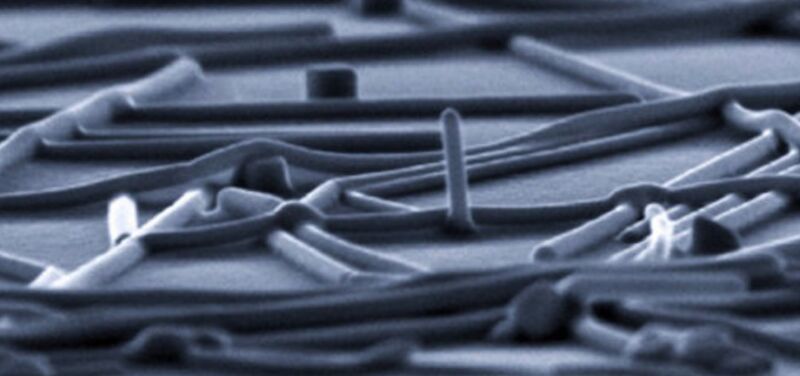Glowing silicon nanowire reveals how to put optics in your CPU

Enlarge (credit: Stanford engineering)
The key term in integrated circuits is integrated. The ability of fabrication facilities to integrate things sets limits on what processes are available and what materials can be safely used. As soon as you suggest a different material or process, the whole chain is broken, and anybody suggesting such a thing should expect people questioning your suitability for your current position. "Compatibility" is why you will not find laser-powered integrated circuits in your laptop.
The ability to make lasers using integrated-circuit-compatible materials, however, may have gotten a boost, with a demonstration of glowing (but not yet lasing) silicon.
Looking on the bright sideOptics and lasers are the backbone of high-speed data transmission. You do not use copper wires to transport data at 1Tb/s. Instead you will use glass and some finely tuned and very expensive laser diodes. But laser diodes are made using processes and materials that are not compatible with those used to make integrated circuits. So, while it is possible to create, say, an optical interconnect between a RAM module and a CPU, you have to somehow glue the optics to the silicon chip in exactly the right location. Research labs are happy to sacrifice PhD students to such ventures, but PhD-bots don't scale well, are high maintenance, and their deployment leads to dark looks.
Read 12 remaining paragraphs | Comments